Sharks are famous for being notorious bloodthirsty creatures– thanks to movies like Jaws and television shows such as Shark Week. However, contrary to popular belief, not all shark species are a threat to people. In fact, most sharks swimming the oceans are harmless and present no risk to humans. Only a few aggressive species, such as tiger sharks and great white sharks, have been associated with unprovoked and provoked shark attacks, and even these attacks occur infrequently. This article brings you 10 most harmless sharks in the world.
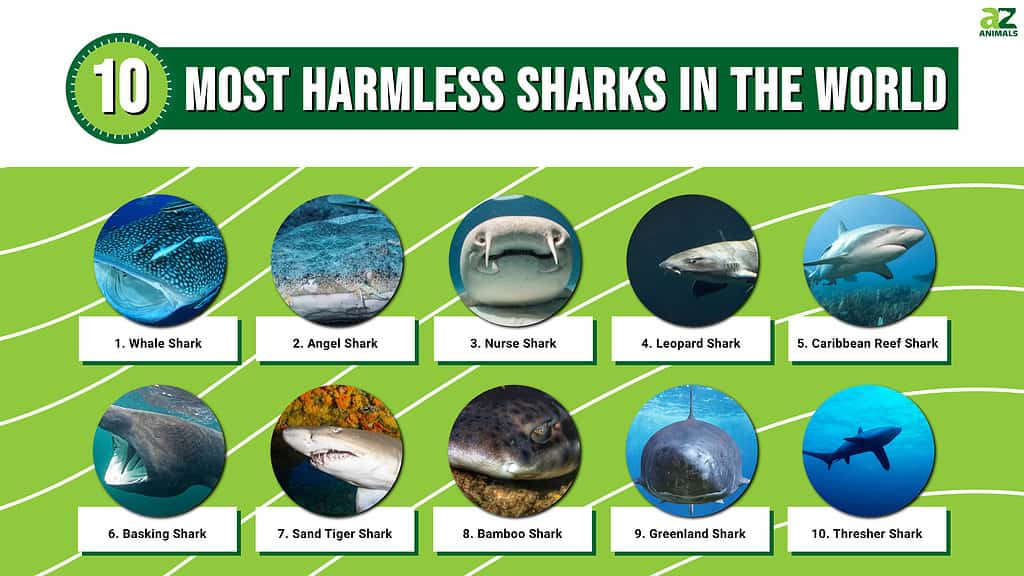
Whale Shark
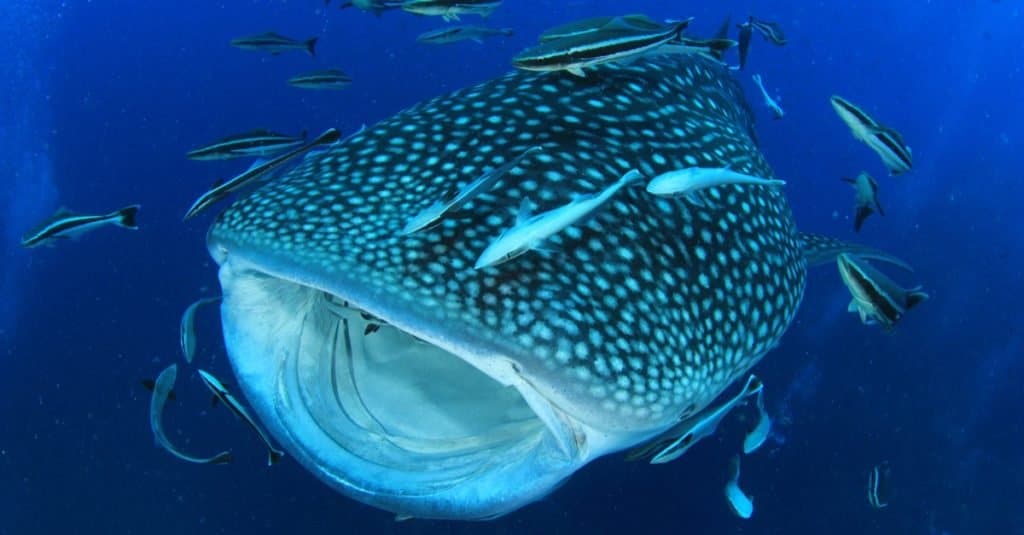
Despite the whale shark’s large size, they do not pose a threat to humans.
©Rich Carey/Shutterstock.com
Whale sharks found in open waters of tropical oceans are very large species, growing more than 30 ft in length. They are filter feeders with tiny teeth that feed almost exclusively on plankton and small fishes. Despite their large size, they surprisingly do not pose a threat to humans. They are docile and even sometimes allow swimmers to ride on their backs. However, this practice has been discouraged due to the disturbance it causes to the sharks. Baby whale sharks are gentle and can also play with divers. Despite their enormous size as the largest shark in the ocean, whale sharks are as harmless as they come.
Angel Shark
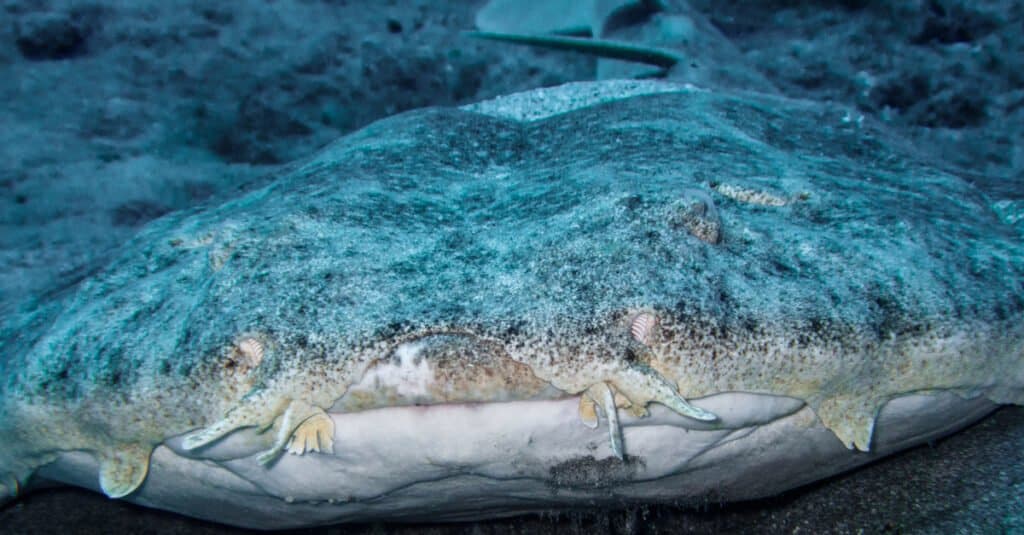
Although the angel shark can deliver a sever bite when disturbed, this rarely happens.
©LuisMiguelEstevez/Shutterstock.com
The angel shark usually remains still or swims away when approached underwater. During the day, it usually lies motionless on the seafloor, burying itself under a layer of sediment with only its eyes showing. At night, the angel shark becomes more active and may sometimes be seen swimming above the bottom. However, this species can deliver a severe bite if disturbed or stepped on, even though this does not occur commonly. Otherwise, they are generally not aggressive towards humans.
Nurse Shark
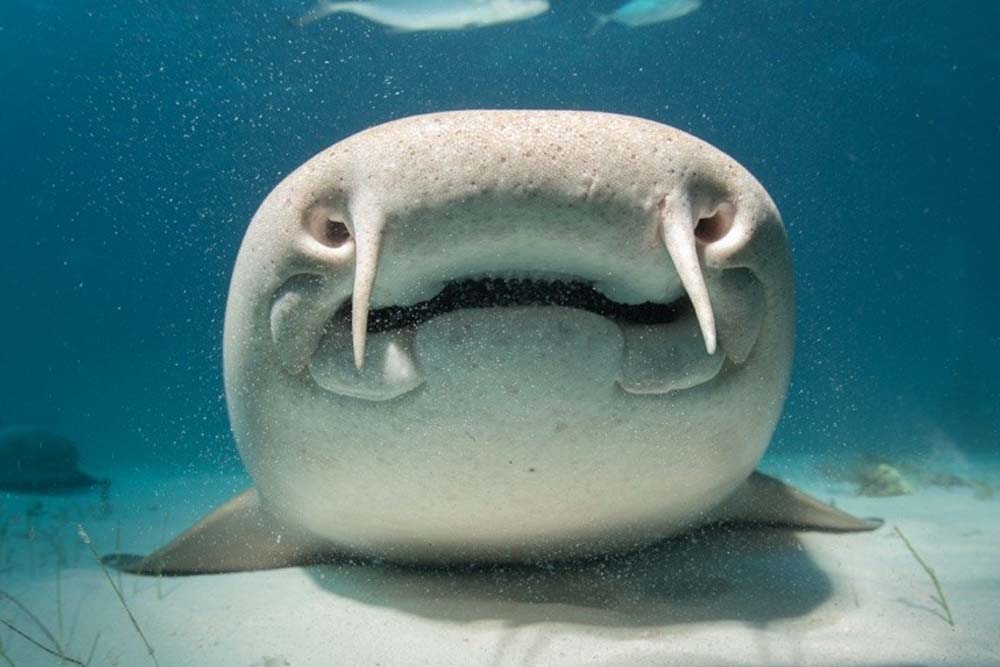
There have only been five unprovoked nurse shark attacks in history.
©Maui Topical Images/Shutterstock.com
Nurse sharks are typically inshore bottom-dwelling species. They are solitary nocturnal animals that rifle through bottom sediments in search of food at night but often form large sedentary groups during the day. Nurse sharks present no threat to humans and have been known to only attack when they are directly antagonized and to protect themselves. There have only been five unprovoked nurse shark attacks in history, and none were fatal.
Leopard Shark

No fatal
leopard
shark attack has been reported.
©evantravels/Shutterstock.com
The leopard shark is found along the Pacific coast of North America, encountered more often in muddy or sandy flats within enclosed bays and estuaries. They generally swim close to the bottom of the water and feed mainly on clams, crabs, shrimp, and bony fish. Considering how often they are encountered in the same shallow waters humans swim in, there have been no fatal cases of leopard shark attacks. They are wary and quick to flee when they encounter humans.
Caribbean Reef Shark
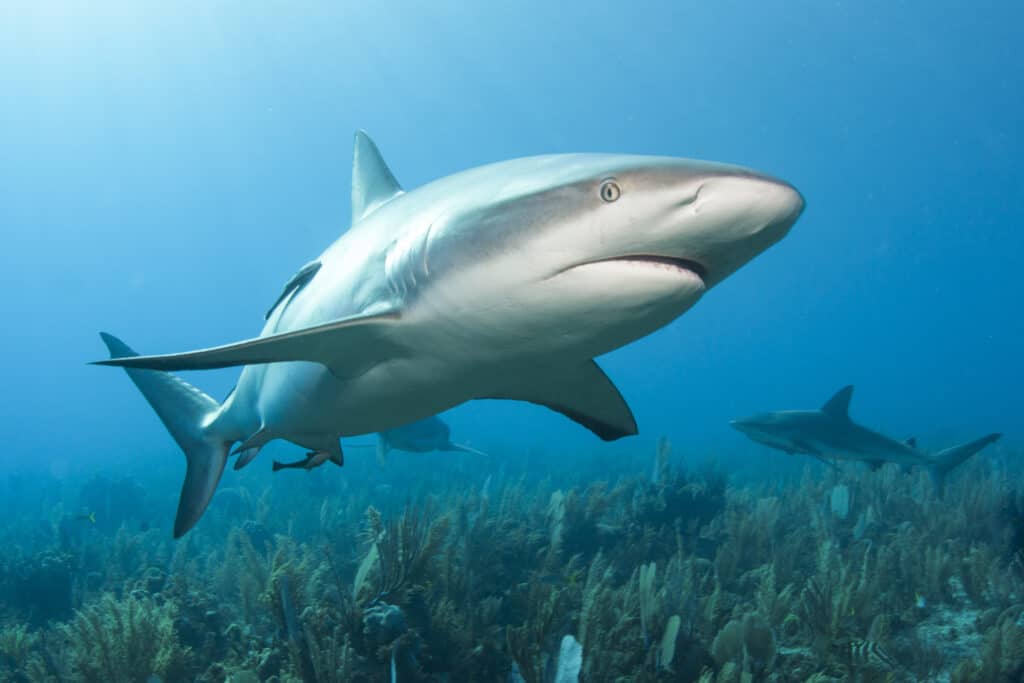
Reef sharks can grow quite large, but they are not especially aggressive and dangerous to humans.
©Konstantin Novikov/Shutterstock.com
The Caribbean reef shark, one of the ocean’s largest apex predators, feeds on various fishes and cephalopods. They are often seen resting motionless at the bottom of the sea, which is considered an unusual behavior for an active-swimming shark. The Caribbean reef shark has a good reputation for being safe around humans, so much so that some ocean guides have turned feeding them into a popular attraction in public places. However, this practice is considered controversial.
Basking Shark

The most impressive feature of the basking shark is its mouth, which opens up to 1 meter wide.
©Martin Prochazkacz/Shutterstock.com
Basking sharks are the second-largest living shark in the ocean, with adults reaching about 26 ft in length. Despite their giant size and threatening appearance, basking sharks are not an aggressive species, and they are harmless to humans. The large sharks have no problem with boats and divers approaching them and may even circle divers, making them an important attraction for dive tourism in areas where they are common.
Sand Tiger Shark

Giant sand
tiger
sharks feed on crustaceans, bony fish, skates, and squid.
©Stefan Pircher/Shutterstock.com
The sand tiger shark is found in subtropical and temperate waters worldwide. It has a short head with sharp protruding teeth and a bulky body, reaching up to 10.5 ft in length.
Despite its frightening appearance and strong swimming ability, it is a relatively gentle and slow-moving shark with no threat of human attacks. They feed on crustaceans, bony fish, skates, squid, and other sharks but their mouths are not large enough to cause a human fatality. Sand tiger sharks are widely displayed in public aquariums worldwide due to their large size and docile temperament.
Bamboo Shark
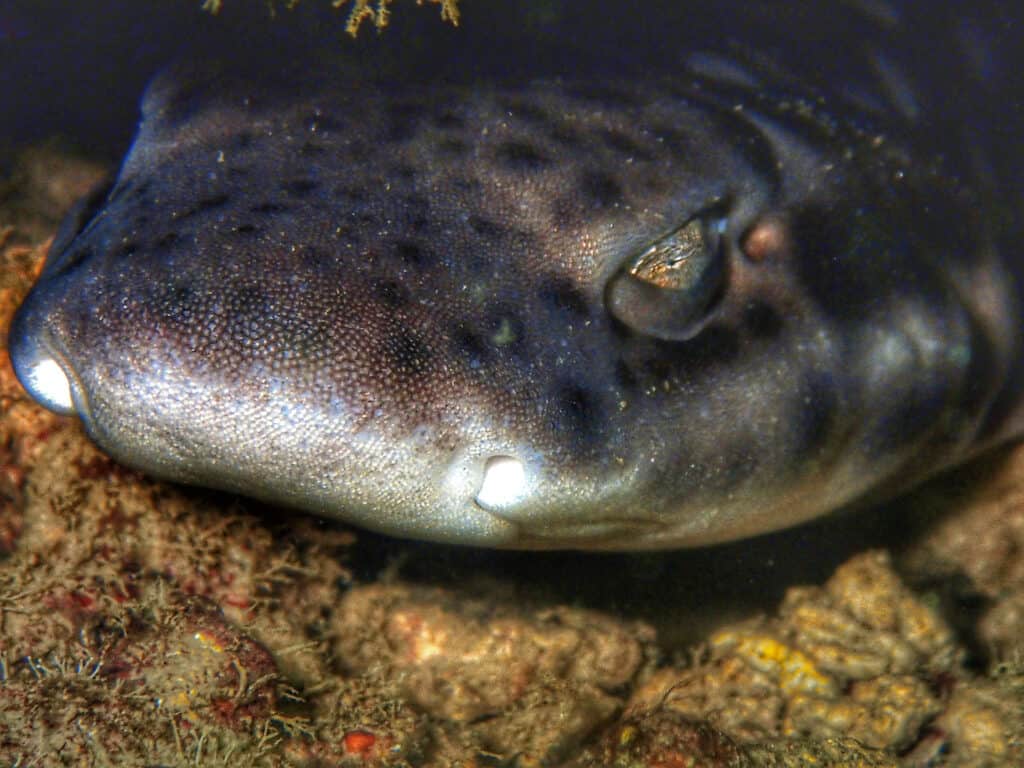
Bamboo sharks may have as many as 67 teeth, but they are harmless to humans.
©Josephine Julian/Shutterstock.com
Bamboo sharks are relatively small, slow-moving sharks measuring about 48 inches in length. These sharks are bottom dwellers and rest in reef crevices by day and feed at night. Like most harmless sharks, they are docile and non-aggressive. Bamboo sharks pose no threat to humans, and there have never been any reported cases of human attacks. They have been observed to let divers pet them without causing any harm.
Greenland Shark

Greenland sharks were once killed and used to make machine oil.
©Dotted Yeti/Shutterstock.com
The Greenland shark is a species mostly distributed in the waters of the North Atlantic Ocean and the Arctic Ocean. As these sharks typically live in the cold depths of the Arctic and North Atlantic, isolated from human activity, they are not known to be a threat to humans. The frigid just-above-freezing waters make the likelihood of attacks on humans very low, and only one attack, which happened 163 years ago, has been recorded so far. Greenland sharks prefer to feed on prey such as eels, herring, skates, lumpfish, smaller sharks, and many other fish prey.
Thresher Shark

Thresher sharks are solitary creatures that like to keep to themselves and do not appear to be a threat to humans.
©bearacreative/Shutterstock.com
Another large shark in temperate and tropical oceans across the world is the thresher shark. They are occasionally sighted in shallow, coastal waters, preferring open ocean in waters less than 500 meters. Their name was derived from their exceptionally long tails used as a weapon to stun prey. Despite their somewhat aggressive characteristics, thresher sharks are solitary creatures that like to keep to themselves and do not appear to be a threat to humans. There has been no record of unprovoked bites by thresher sharks on humans.
Summary of The 10 Most Harmless Sharks in the World
| Number | Shark |
|---|---|
| 1 | Whale Shark |
| 2 | Angel Shark |
| 3 | Nurse Shark |
| 4 | Leopard Shark |
| 5 | Caribbean Reef Shark |
| 6 | Basking Shark |
| 7 | Sand Tiger Shark |
| 8 | Bamboo Shark |
| 9 | Greenland Shark |
| 10 | Thresher Shark |
The photo featured at the top of this post is © iStock.com/richcarey
Thank you for reading! Have some feedback for us? Contact the AZ Animals editorial team.






